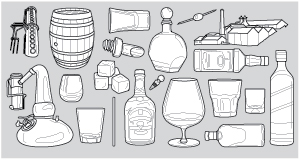The research agency said the recovering economy and an increasing tendency to splash out on a ‘big night in’ is boosting spending on wine in the UK, even as total consumption volumes are declining.
Around 4 in 10 monthly wine drinkers are spending more than £8 on a bottle of wine to drink at home for a formal occasion, up from 29% a year ago, according to The UK Wine Market Landscape 2014.
At the same time the proportion saying they are spending less than £4 a bottle in the off trade has fallen to 9% from 14%, the first time this measure has fallen below 10% since Wine Intelligence’s data series began in 2003.
The sixth edition of Wine Intelligence’s report on the state of Britons’ wine drinking habits also notes the phenomenal growth of prosecco. The Italian sparkling wine has seen volumes rise 250% in four years to become the UK’s favourite fizz for the first time.
The specialist wine market research says the prosecco revolution still has some way to run, with awareness of Prosecco still trailing both cava and champagne among regular wine drinkers.
It claims the wine retail picture is being redrawn. Tesco remains the number one, with 48% of UK regular wine drinkers saying they have bought wine there over the past six months, down from 52% in 2013. During the same period, hard discounters have dramatically expanded their consumer reach: 16% of regular wine drinkers said they bought wine in Aldi, compared with 10% in 2013. Lidl’s reach grew to 11%, compared with 7% in 2013.
Profiling analysis of the hard discount customer base suggests that the chains are attracting lower involved, older wine consumers who are still committed to spending under £5 on wine to drink at home.
Chief operating officer Richard Halstead said: “I believe we are seeing a fundamental realignment of the UK wine market into effectively two separate and distinct segments, with very different drivers. On the one hand you have a growing group of highly-involved consumers who are seeking quality and new experiences; on the other you have less involved consumers who are unwilling or unable to trade up.
“Both groups are contributing to the declining volumes we still see in the UK: the higher spending segment are drinking less, but spending more per bottle; the lower spending segment is simply buying less because they are budget constrained and, given average prices have risen by more than £1 a bottle since the Duty Escalator was introduced six years ago, wine is becoming something they are learning to live without.”




